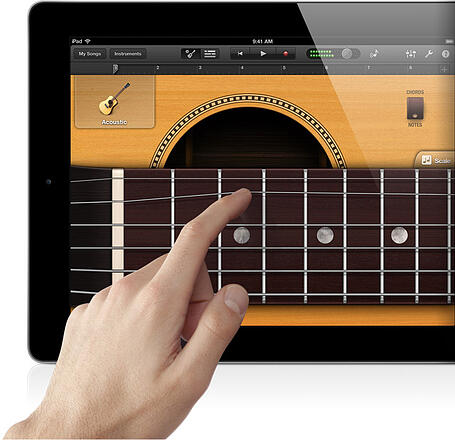
- Jan 03, 2018 One of the craziest omissions in GarageBand for iPad and iPhone is the lack of a master track for mixing. A master track sits in your GarageBand window alongside your recorded instruments, and lets you apply EQ and effects — bass, treble, reverb, and so on — to the entire song. Even in the amazing new GarageBand 3.2, there’s no proper master track.
- Nov 08, 2014 (self.GarageBand) submitted 4 years ago by TheNumberMuncher I accidentally did something that made it show all the sections at once and would play through the whole song instead of just looping a section.
The GarageBand User Guide for iPad is the official manual covering how to use Apple’s GarageBand for iPad to play, record, and share your music. Global Nav Open Menu Global Nav Close Menu Apple.
Make music with Touch Instruments
Use Touch Instruments to play keyboards, drums, guitars, strings, and more. Record your own vocals or plug in your guitar or bass, and play through a great selection of amps and stompbox effects.
Build your song
Choose from hundreds of Apple Loops to add to your song, add a drummer that plays along to the music you recorded, and mix your song with effect plug-ins.
How To Use Garageband Ipad
Create music like a DJ

Play Whole Song Garageband Ipad Free
Use Live Loops to create electronic music by simply tapping cells and columns in the grid to trigger musical loops. You can build your own arrangements, then improvise and record a Live Loops performance.
Download free loops and instruments
Use the Sound Library to download and manage sound packs containing hundreds of loops, sounds, Touch Instruments, drum kits, and more. GarageBand lets you know when new sound packs are available to download.
To browse the GarageBand User Guide for iPad, click Table of Contents at the top of the page.
GarageBand User Guide for iPad
You can record (or sample) a sound using a microphone, or add an audio file, and then play it back like a melody on the Sampler keyboard. You can save samples to use in other GarageBand songs, and edit them in several ways.
Open the Sampler
Tap the Browser button , swipe to the Keyboard, then tap the Sampler button.
Record a sample
Tap the Start button.
Play, sing, or make sound into the built-in microphone or a connected microphone.
When you finish, tap the Stop button to stop recording.
Add an audio file to the Sampler
In Tracks view: Drag a blue region from an Audio Recorder or Amp track to the Sampler track.
In the Sampler: Tap Import, then tap the button to the right of the audio file.
Play the sample
Tap notes on the Sampler keyboard.
The sound plays higher or lower as you play higher or lower on the keyboard. You can play multiple keys to create “chords” with the sound.
The Sampler also includes controls that let you change the keyboard range, hold notes, change the keyboard layout and size, bend notes and add modulation, adjust touch sensitivity, arpeggiate chords, or play using a particular scale. These controls are the same as the controls for the Keyboard Touch Instrument.
Choose a different sample to play or edit
Tap My Samples, then tap the name of the sound you want to play in either This Song or Library.
Adjust the microphone input level
When you make sound, the Input Level meter shows that the Sampler is receiving an input signal from your microphone. If your audio device supports software level control or monitoring, the Input Settings button is available in the Sampler window.
Tap the Input Settings button , then drag the Level slider left or right to set the input level.
To set the level automatically, tap the Automatic switch next to the Level slider.
If the input device supports left and right channels, tap Left or Right to select the input channel.
Turn on monitoring for an external microphone
When an external microphone or other audio device (such as a headset or an audio interface) is connected to your iPad, a Monitor switch appears below the Noise Gate controls.
Tap the Input Settings button .
Tap the Monitor switch to turn monitoring on. Tap the switch again to turn monitoring off.
Rename the sample
In the Library, tap the sample to select it, then tap Rename.
Type a new name, then tap Done.
Edit the sample
Tap the name of the sound in either This Song or Library, then tap the arrow next to the name.
Do any of the following:
Edit the volume of the sample over time: Tap Shape, then drag the points on the curve over the waveform.
Adjust the pitch of the sample: Tap Tune, then drag the Coarse Tune (for big adjustments) or Fine Tune (for small adjustments) slider.
Trim the beginning or end of the sample: Tap Trim, then drag the handle on the left or right edge of the waveform. You can touch and hold either handle to zoom in for more precise editing.
Undo your edits and start over: Tap Revert.
Play the sample backward: Tap Rev.
Loop the sample so it plays repeatedly: Tap Loop.
Play Whole Song Garageband Ipad 1
If you edit the volume by dragging the Shape points, the volume edits are saved with the sample.